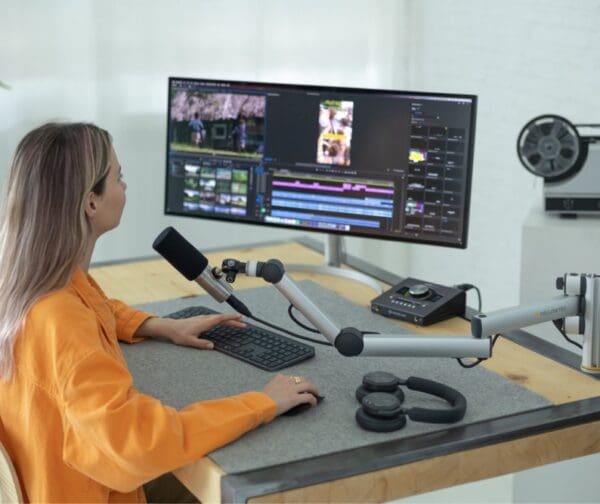
Remote vs. On-Site Captioning: What's the Difference?
Remote vs. On-Site Captioning: What’s the Difference?
Do you need live captioning at your event, meeting, lecture or class but not sure where to start? Perhaps you’ve previously booked an interpreter or note-taker and assume that the live captioner will be physically in attendance.
Live captioning can be provided by a captioner remotely, and below we set out the differences between on-site and remote live captioning, and the advantages and disadvantages of both.
What are they?
On-site captioning
A captioner (typically a stenographer) travels to the relevant venue of the event, lecture or meeting. The captioner comes prepared with their stenotype machine and computer. The captioner listens to the audio at the venue and captions everything they hear. The captions are then either sent to the individual user (usually being someone who is deaf or hard of hearing) or displayed on a screen, projector or computer for captions being delivered to a wider audience.
Remote captioning
Remote captioning involves the audio from the relevant speaker being sent to a captioner in a remote location (usually through the internet or telephone), and then the captions are sent back (through the Internet) to the individual or venue via a web-enabled device (such as mobile or laptop). For events the device can be connected to a screen or projector.

What are the differences?
| Remote | On-Site |
|
|
What We Provide
At Ai-Media, we provide the vast majority of our live captioning remotely, and through our own captioning platform “Ai-Live”. Through our remote captioning services, you can enjoy the following features:
- sessions are accessible on any smartphone, tablet or laptop (including where connected to a projector) without needing any software to be downloaded;
- we are able to receive video or audio through a number of means, including by internet videoconferencing or video casting and telephone;
- we have a large pool of experienced captioners, which enables us to call on a stable pool of live captioning resources, even at short notice;
- each live captioning session we deliver has a coordinator on shift at all times (who are also captioners), ensuring technical issues may be promptly resolve;
- users can chat with captioners within our Ai-Live platform, allowing for correction of any terms and also troubleshooting audio issues;
- we have a sales team that are experienced in liaising with AV teams at venues to devise the best audio solution for a session.
If you have any questions about your upcoming event or organize a quote for live remote captioning, get in touch at .